There was an expectation that, with the legal ending of segregation, the opportunities for Blacks in America would improve dramatically. I certainly felt that at the time, and also found the same sentiment in South Africa in the late 1990s with the election of Nelson Mandela and ANC rule. In both countries, expectation dashed. I guess it’s the case of marching up the hill, then marching down again.
I travelled across the South on the latter stages of my road trip. Specifically, I took a bus through Mississippi to get closer to the experience of the Freedom Riders of the early 1960s. Ok, the times were significantly different, and the bus lines were extremely limited, but I felt closer to society than driving along in a car.

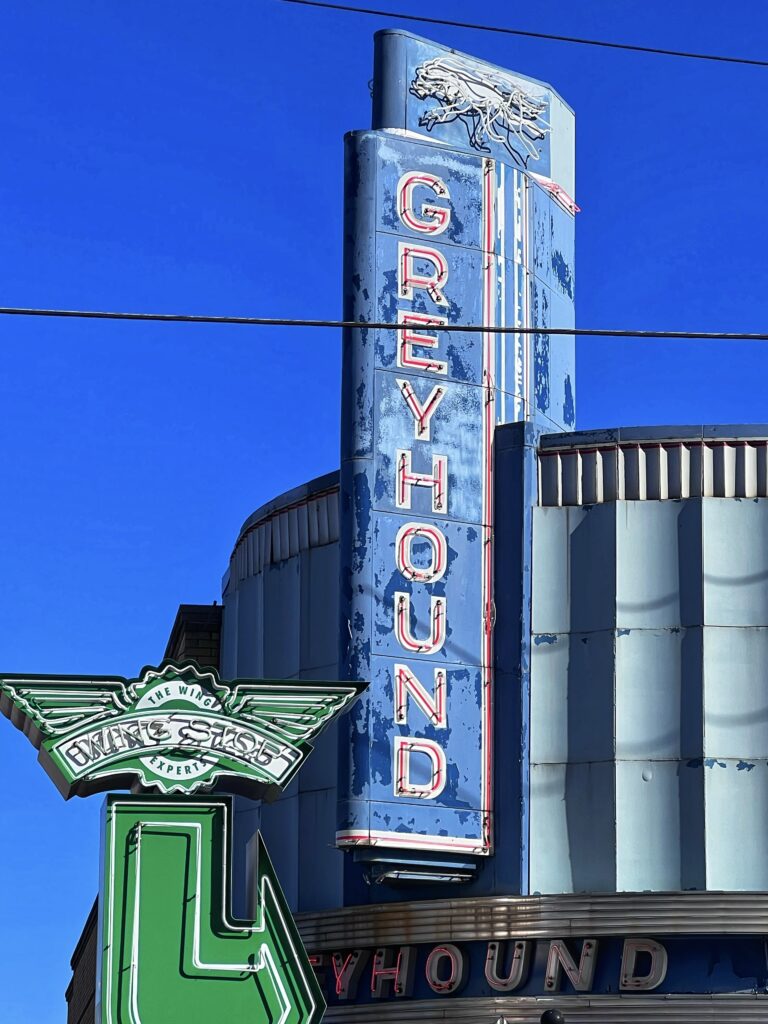
My feeling is that, though the long arc of the moral universe is bending towards justice – as observed by Martin Luther King Jr – it’s a long, long arc. I came away from the swing through the South, reinforced by what I found on the road trip generally, feeling less optimistic about the pace of change in America towards integration and opportunity for Blacks.
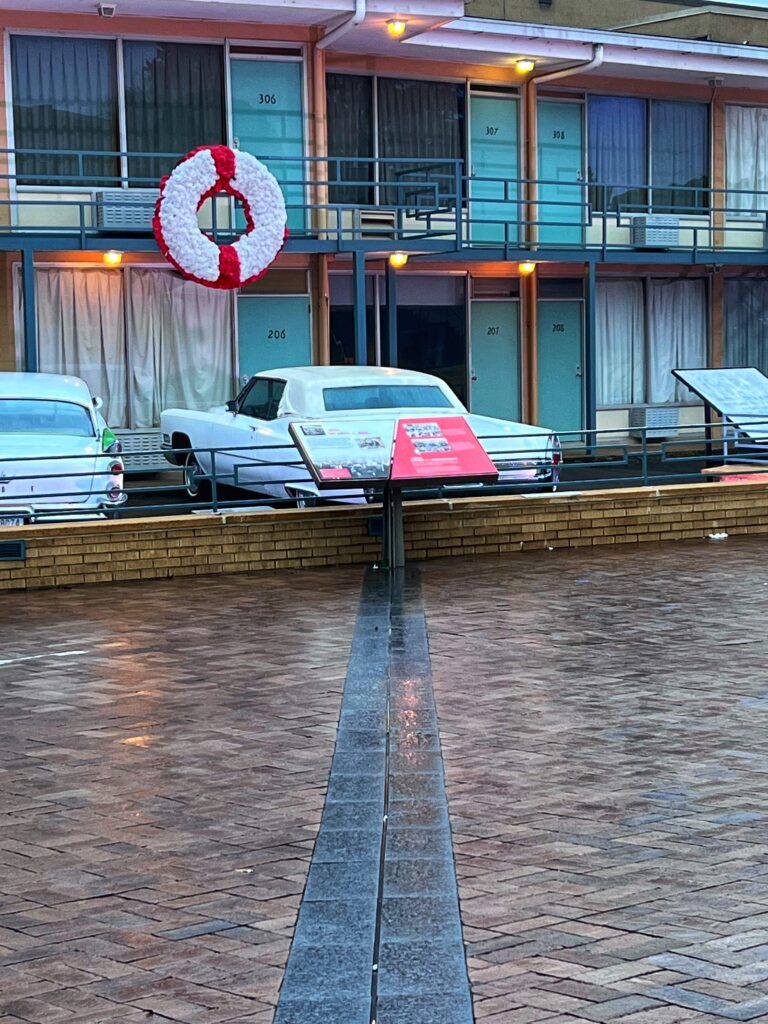
Back in the 1960s I read Black Like Me by John Howard Griffin. Griffin darkened his skin to travel around the South, and the general feeling from his conversations was that, once segregation ended and voting was allowed, opportunities for Blacks would be realised. President Lyndon Johnson certainly felt that – his thought at the time was that the one thing he could do to contribute to the end of segregation was to give Blacks the vote. LBJ invested considerable capital in passing the Voting Rights Act of 1965, losing the South to the Republicans in the process.
There is a direct link from that decision to the election of Barack Obama as president. Blacks were able to exercise their right to vote and, through that enfranchisement, began to exercise power and influence outcomes. Sadly, I was told by many Blacks that current efforts to suppress their vote have led to disillusionment with the ‘system’. This has, among other reasons, contributed to Blacks not exercising their right to vote. The irony is stark.
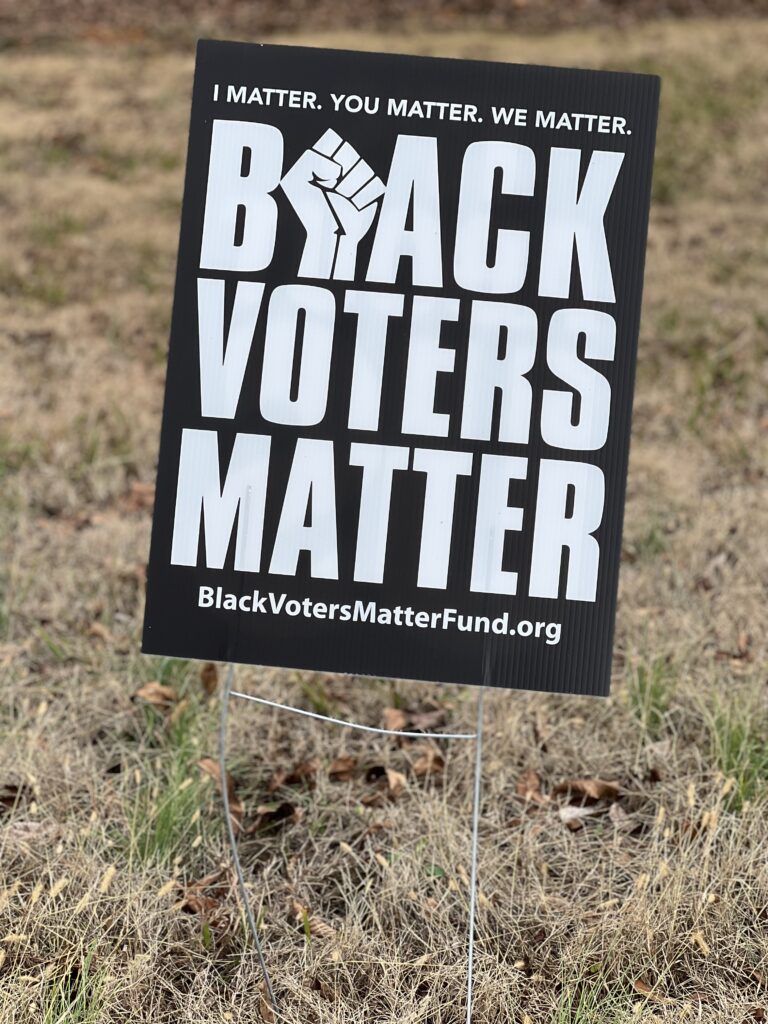
Progress has, therefore, been limited. Blacks have certainly entered the middle class and the professions, but the roots of segregation go deep. The election of Donald Trump as president gave legitimacy to overt expressions by some of their deeply held beliefs about segregation and the place of Blacks in society. What we honour and call things is what we respect. I saw many statues across the South honouring the insurrectionist leaders and the ‘lost cause’ they led. I drove along Jefferson Davis Rd and Robert E Lee Blvd on my way to Stone Mountain. There is still a veneration of Confederate leaders across the South and beyond.
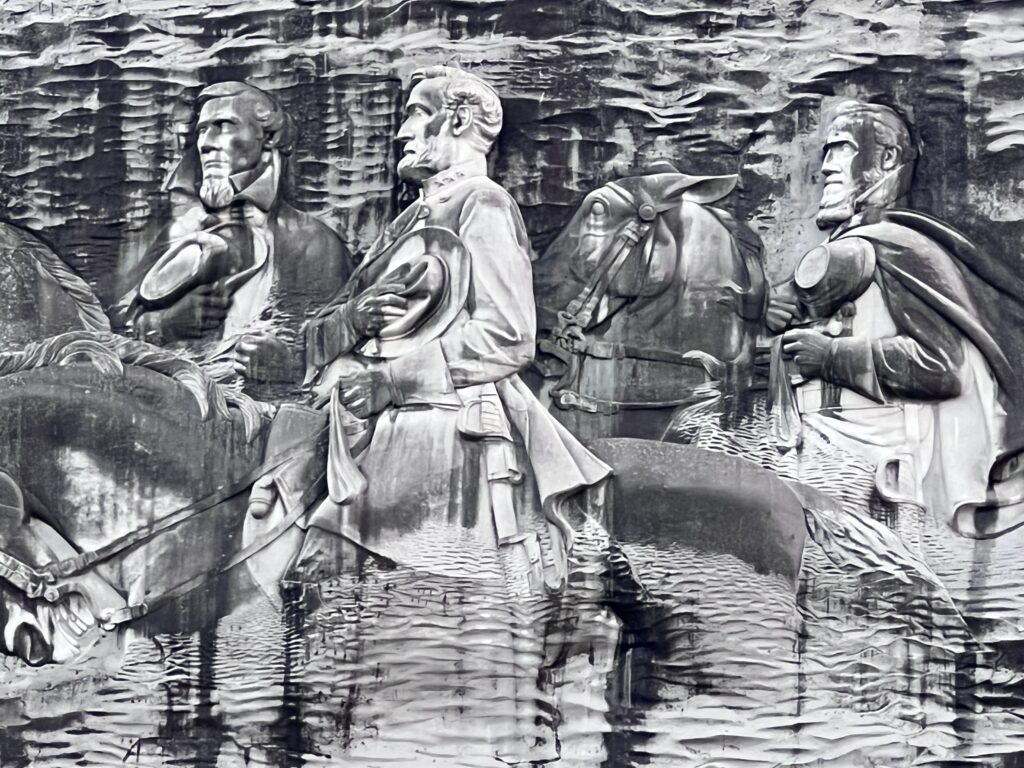
My ancestors were from Virginia and fought in Confederate armies. I walked in their footsteps on the battlefields of Gettysburg, Antietam, Chickamauga, and Shiloh. While I honour their service, I abhor the cause for which they fought. I heard people tell me that the Civil War was about states rights – yes, but states rights to continue to enslave people. There is a reluctance, particularly across the South, to fully acknowledge what the Civil War was about – until it’s accepted that the South fought for the perpetuation of slavery, the likes of Lee and Davis will be honoured and respected in place of fully accepting Blacks into society.
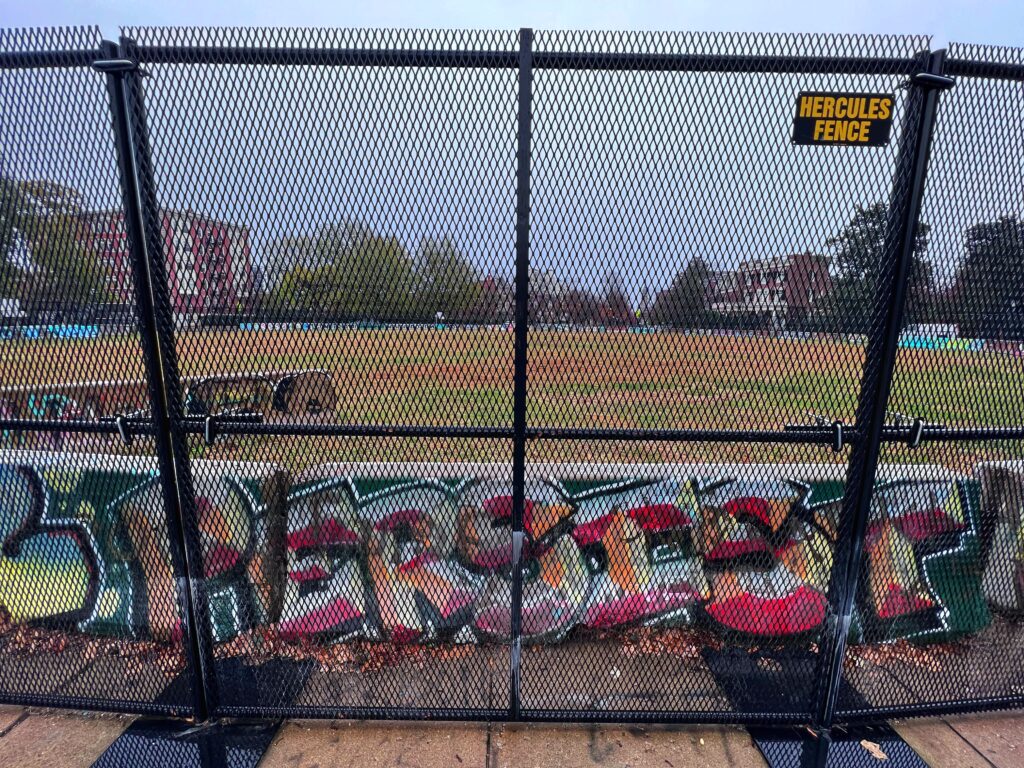
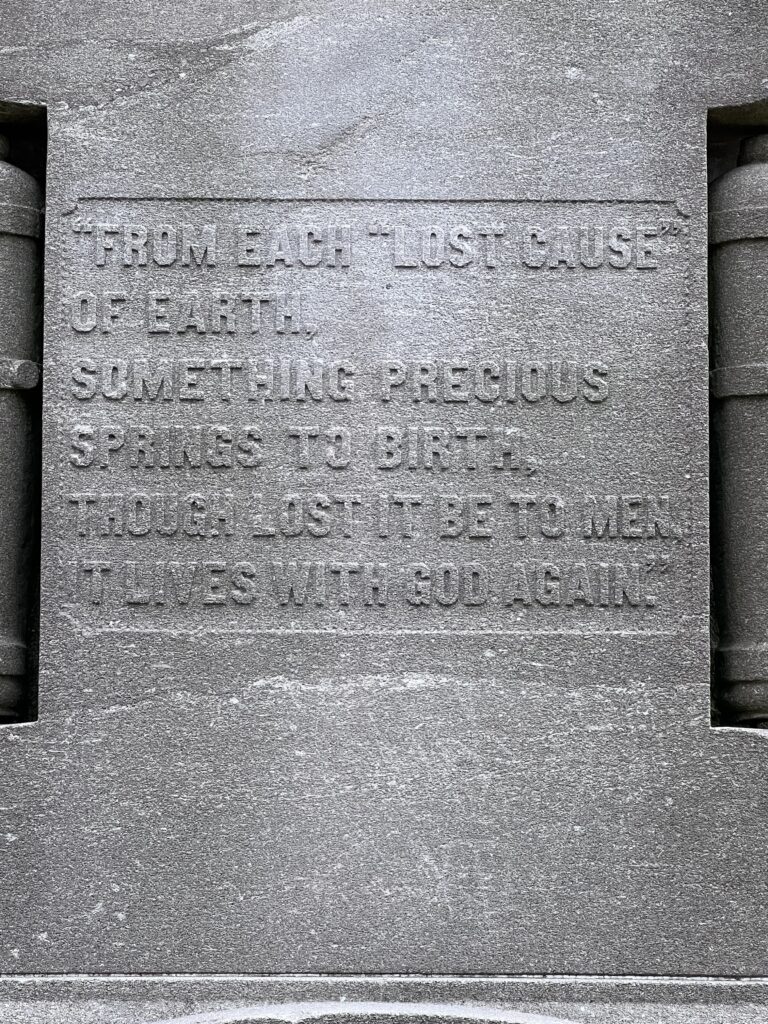
Accepting Blacks as equal in America means redressing some of the imbalance. The Voting Rights Act was a major step in this direction, but the Supreme Court subsequently emasculated its enforcement – job now done in its view, so no need to continue to have oversight in the South. Voter suppression also extends beyond the South to Republican-controlled areas across the US, where the view is to suppress rather than engage Black voters. The Court will also most likely end affirmative action – job done there too.
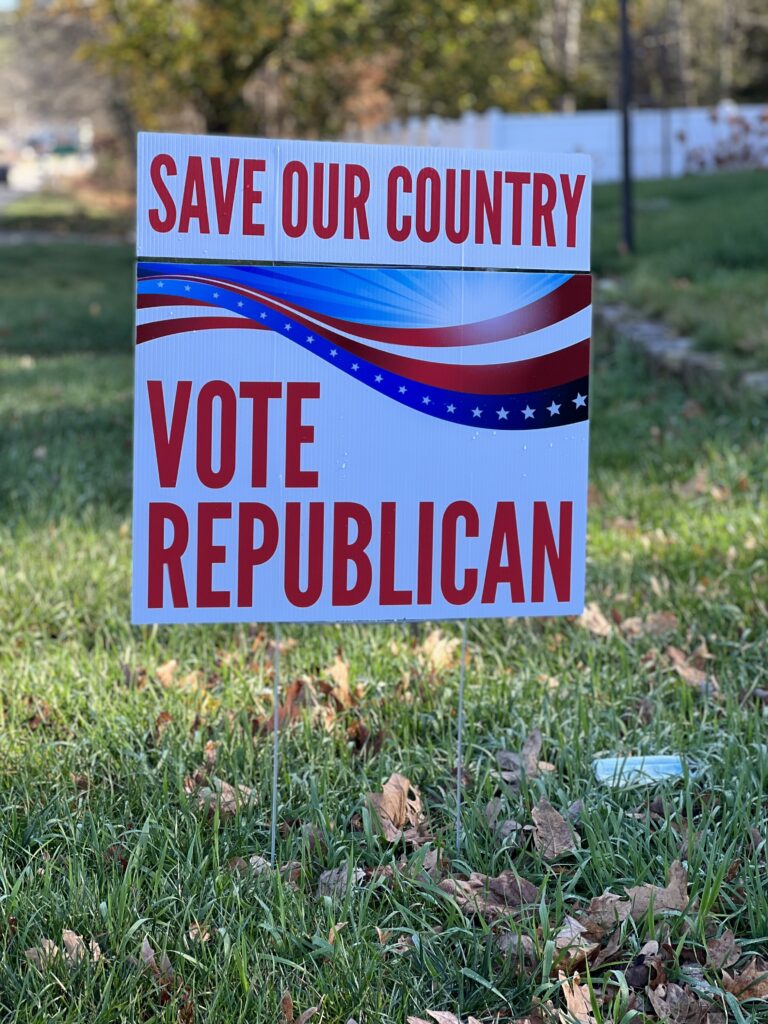
There is also a reluctance to discuss these issues in schools. I heard many people tell me that they object to the teaching of CRT (critical race theory) in schools, but I was given no evidence of this academic discipline being taught in grade or high schools. I don’t understand CRT – and no one could explain it to me – but its exclusion from schools is now a plank in local school board elections. The irony is that, while Americans are rightly keen to discuss and acknowledge the Holocaust that happened afar, there is a reluctance to discuss slavery and Native American genocide that happened on home soil.
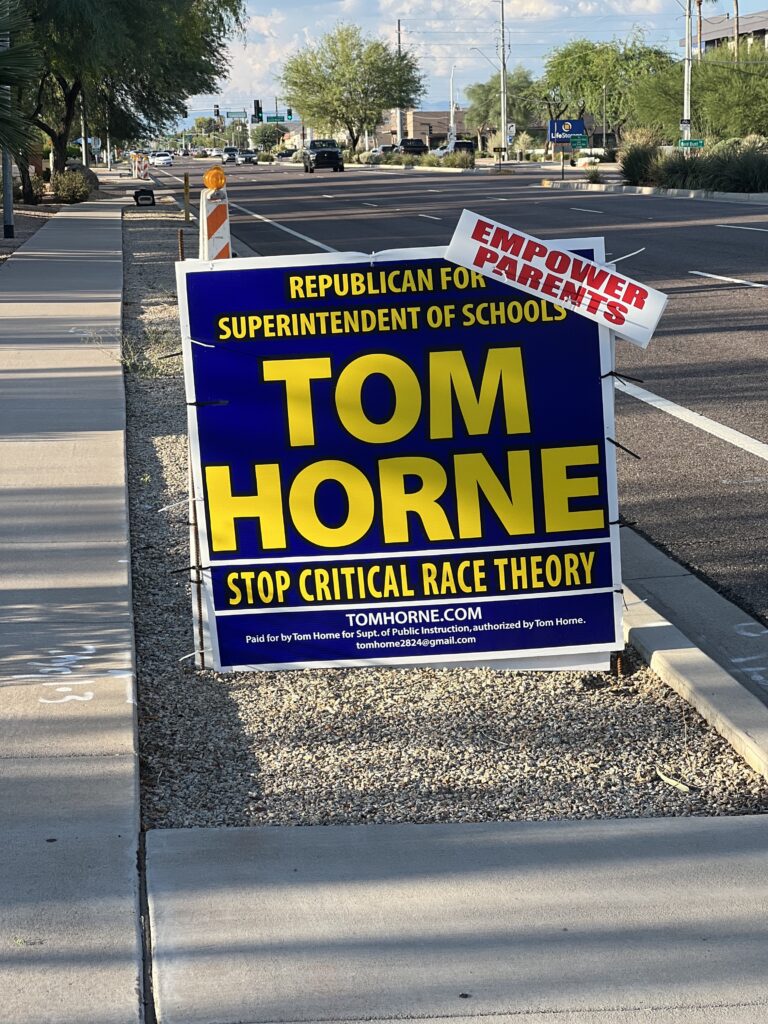
America, and the South particularly, is full of contradictions about slavery, civil rights, and Black inclusion. I walked across Edmund Pettus Bridge in Selma, then followed the route of the march to Montgomery to claim the right to vote. At the capitol in Montgomery, the civil rights movement is acknowledged and explained in plaques, museums and memorials, yet the statue of Davis as leader of the insurrection stands proud at the capitol building. The South still respects Confederate leaders and what they stood for, and this, de facto, will, among other things, continue to get in the way of realising King’s dream of an integrated America.
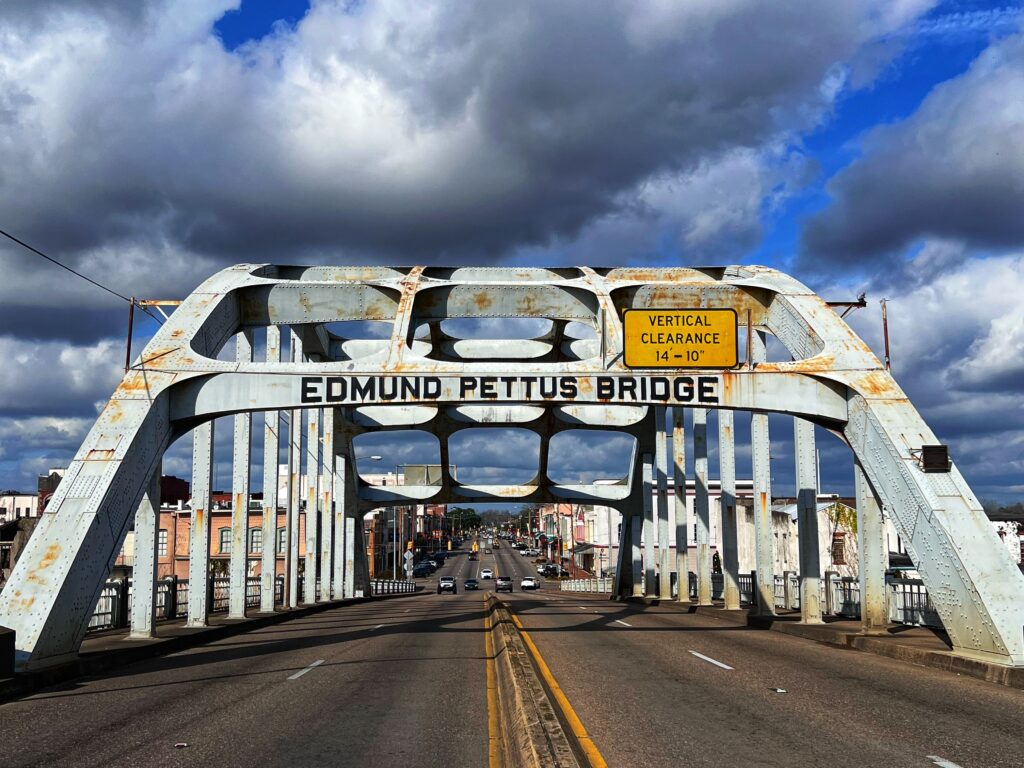
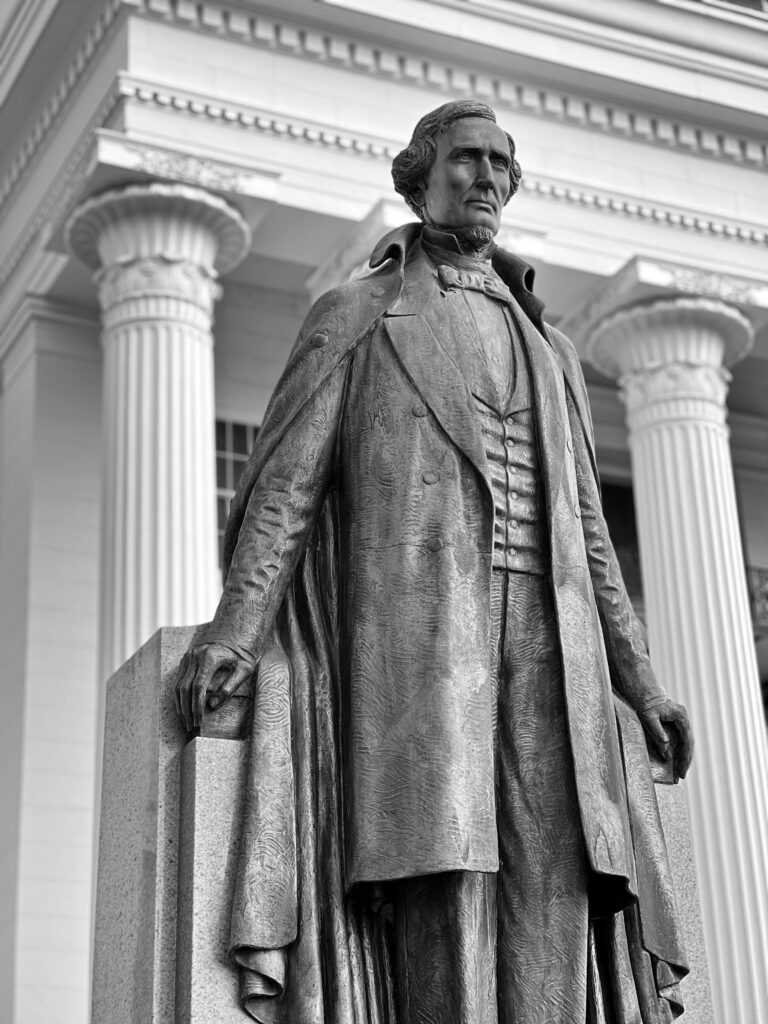
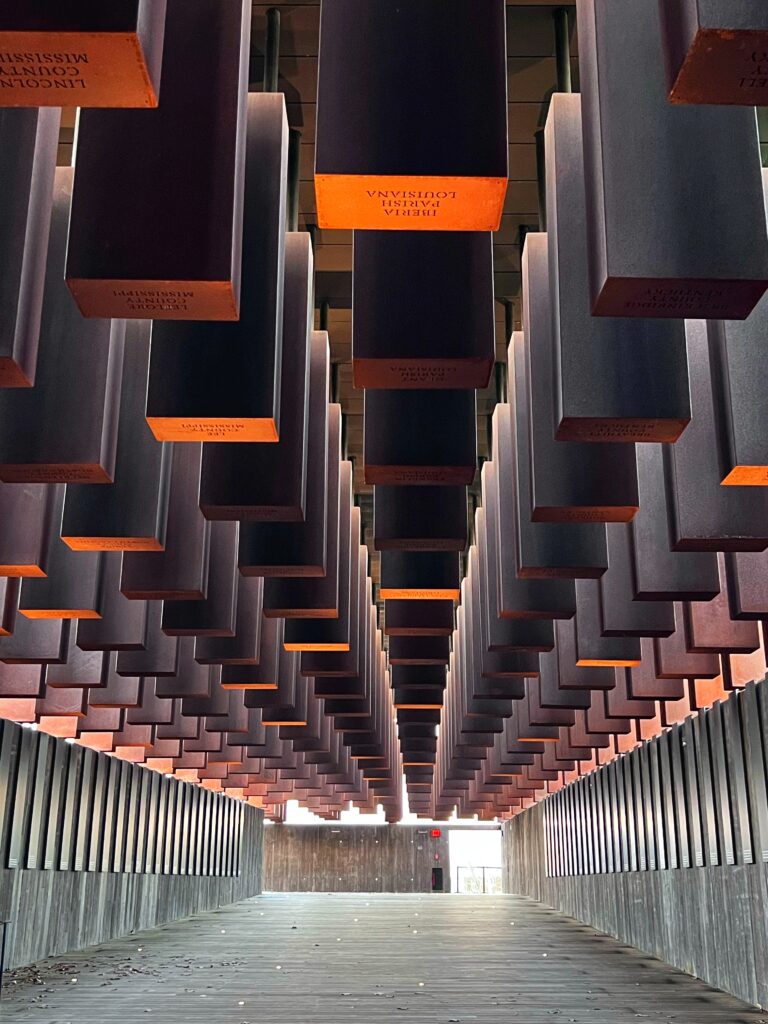
All this came together at the US Capitol on 6 January 2021. It’s a beautiful building, a magnet for tourists. And insurrectionists. Watching the rioting on TV in Glasgow, my first thought was, what if those folk had been Black? There would have been carnage. As it was, white people stormed the capital and, had it not been for a Black Capital Police officer, Eugene Goodman, the Senators themselves would have been directly threatened. Fox News called this fake news. The arc of the moral universe is going to be very long indeed.
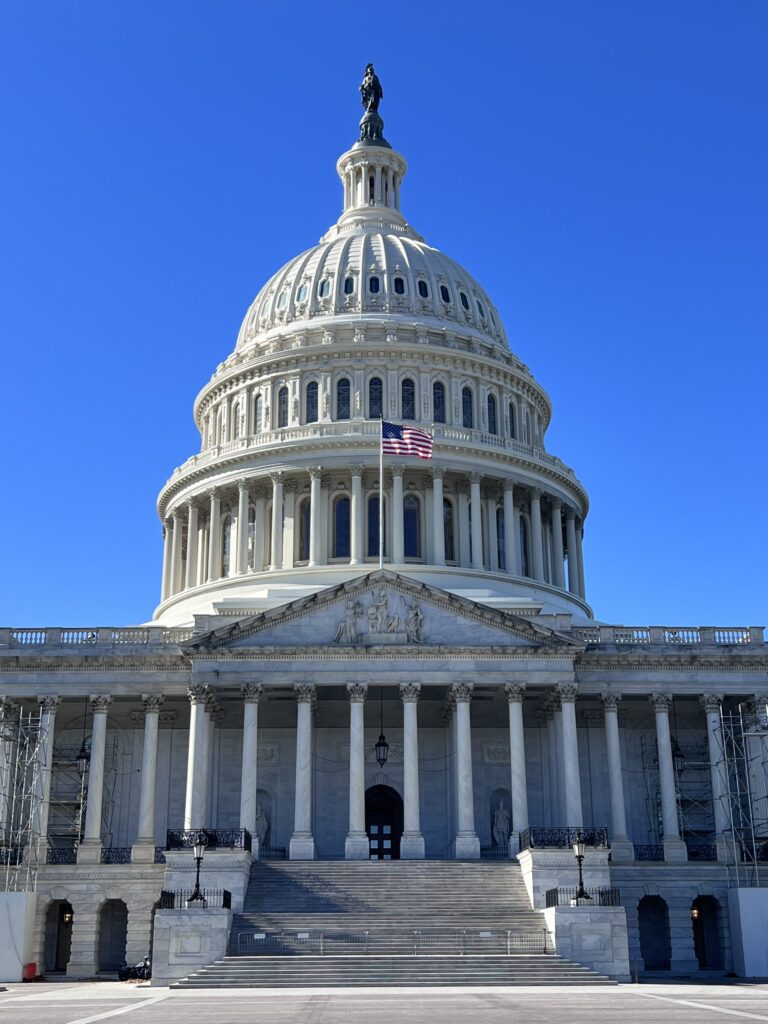


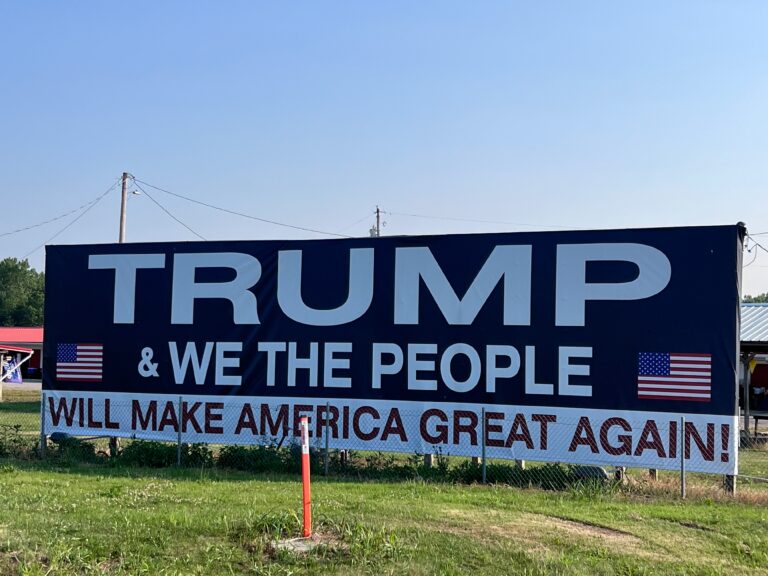

162 Responses
Wow John,
This road trip of yours is powerful, thought provoking stuff. Cannot wait for the book.
A sentence that resonated deeply is “I took a bus through Mississippi to get close to the experience etc etc. OK times were different and bus lines limited but I felt closer to society than driving along in a car.”
My sentiments exactly – public transport tells the story.
My most vivid memories are buried deep in my psyche in the Vietnam of ’67, ’68 and 69. The black GIs were angry, then depressed at the assassination of Martin Luther King / Bobby Kennedy and showed that passion at the fisted salute of the the 2 black athletes on the winners Olympic rostrum in Mexico City August 1968. They had signed up for combat duty as the promise of surviving 2 years in a combat area would hold out the promise of a college scholarship and their way out of their inner city no go areas .
Now you write that many are disillusioned and do not bother to vote.
As a Brit who has seen much of what this world is about, I rage at the machine – as do they.
Where do dreams go? Hey – that’s a title for a book. But it could be the question we all need to be asking. Your road trip John surely raises that question.
Anne W.
Thanks Anne, I might borrow that title! Back in the UK now, so hopefully meet up soon. J
Awesome blog! Do you have any tips for aspiring writers? I’m planning to start my own blog soon but I’m a little lost on everything. Would you propose starting with a free platform like WordPress or go for a paid option? There are so many options out there that I’m completely overwhelmed .. Any tips? Cheers!
Thanks Zoritoler, I went with WordPress via ThriveWP, letting the experts do their job instead of me. I’ll need to let you know on the writing when I get stuck into the book. For now, I try to report rather than comment, and take an expat view to see all perspectives. J
I appreciate you sharing this blog post. Thanks Again. Cool.
Hi there to all, for the reason that I am genuinely keen of reading this website’s post to be updated on a regular basis. It carries pleasant stuff.
I very delighted to find this internet site on bing, just what I was searching for as well saved to fav
I am truly thankful to the owner of this web site who has shared this fantastic piece of writing at at this place.
Awesome! Its genuinely remarkable post, I have got much clear idea regarding from this post.
I appreciate you sharing this blog post. Thanks Again. Cool.
I truly appreciate your technique of writing a blog. I added it to my bookmark site list and will
Hi there to all, for the reason that I am genuinely keen of reading this website’s post to be updated on a regular basis. It carries pleasant stuff.
I am truly thankful to the owner of this web site who has shared this fantastic piece of writing at at this place.
I just like the helpful information you provide in your articles
I really like reading through a post that can make men and women think. Also, thank you for allowing me to comment!
Cool that really helps, thank you.
You’re so awesome! I don’t believe I have read a single thing like that before. So great to find someone with some original thoughts on this topic. Really.. thank you for starting this up. This website is something that is needed on the internet, someone with a little originality!
very informative articles or reviews at this time.
I am truly thankful to the owner of this web site who has shared this fantastic piece of writing at at this place.
This was beautiful Admin. Thank you for your reflections.
Good post! We will be linking to this particularly great post on our site. Keep up the great writing
I truly appreciate your technique of writing a blog. I added it to my bookmark site list and will
Pretty! This has been a really wonderful post. Many thanks for providing these details.
I’m often to blogging and i really appreciate your content. The article has actually peaks my interest. I’m going to bookmark your web site and maintain checking for brand spanking new information.
Cheers, appreciate it. J
I like the efforts you have put in this, regards for all the great content.
Cool that really helps, thank you.
Great information shared.. really enjoyed reading this post thank you author for sharing this post .. appreciated
For the reason that the admin of this site is working, no uncertainty very quickly it will be renowned, due to its quality contents.
I truly appreciate your technique of writing a blog. I added it to my bookmark site list and will
Cheers, much appreciated. J
This is really interesting, You’re a very skilled blogger. I’ve joined your feed and look forward to seeking more of your magnificent post. Also, I’ve shared your site in my social networks!
Cheers, much appreciated. J
There is definately a lot to find out about this subject. I like all the points you made
Cheers, much appreciated. J
You have noted very interesting points! ps decent web site. “Formal education will make you a living self-education will make you a fortune.” by Jim Rohn.
I am truly thankful to the owner of this web site who has shared this fantastic piece of writing at at this place.
I need to to thank you for this fantastic read!! I definitely loved every bit of it. I have you bookmarked to check out new stuff you post?
Cheers, much appreciated. J
Keep working ,terrific job!
I do not even know how I ended up here, but I thought this post was great. I don’t know who you are but definitely you’re going to a famous blogger if you aren’t already ???? Cheers!
Cheers, much appreciated. J
For the reason that the admin of this site is working, no uncertainty very quickly it will be renowned, due to its quality contents.
very informative articles or reviews at this time.
Very well presented. Every quote was awesome and thanks for sharing the content. Keep sharing and keep motivating others.
I really like reading through a post that can make men and women think. Also, thank you for allowing me to comment!
Hi! This post could not be written any better!
Reading this post reminds me of my old room mate! He always
kept talking about this. I will forward this post to him.
Pretty sure he will have a good read. Many thanks for sharing!
Thanks much appreciated. J
I think this post makes sense and really helps me, so far I’m still confused, after reading the posts on this website I understand.
Thanks much appreciated. J
I very delighted to find this internet site on bing, just what I was searching for as well saved to fav
Great information shared.. really enjoyed reading this post thank you author for sharing this post .. appreciated
Very well presented. Every quote was awesome and thanks for sharing the content. Keep sharing and keep motivating others.
Hi! I’m at work surfing around your blog from my new iphone 4! Just wanted to say I love reading your blog and look forward to all your posts! Keep up the fantastic work!
Thanks, much appreciated. J
I have not checked in here for some time since I thought it was getting boring, but the last few posts are great quality so I guess I’ll add you back to my daily bloglist. You deserve it my friend ????
Thanks, much appreciated. J
Very nice article. I certainly appreciate this site. Keep writing!
Thanks, much appreciated. J
Hi there to all, for the reason that I am genuinely keen of reading this website’s post to be updated on a regular basis. It carries pleasant stuff.
Thanks, much appreciated. J
This is really interesting, You’re a very skilled blogger. I’ve joined your feed and look forward to seeking more of your magnificent post. Also, I’ve shared your site in my social networks!
Thanks, much appreciated. J
Pretty! This has been a really wonderful post. Many thanks for providing these details.
Thanks, much appreciated. J
You have noted very interesting points! ps decent web site. “Formal education will make you a living self-education will make you a fortune.” by Jim Rohn.
Very well presented. Every quote was awesome and thanks for sharing the content. Keep sharing and keep motivating others.
Thanks, much appreciated. J
I think the content you share is interesting, but for me there is still something missing, because the things discussed above are not important to talk about today.
I like the efforts you have put in this, regards for all the great content.
Thanks, much appreciated. You’ll also see my other blogs and road trip gallery. J
I appreciate you sharing this blog post. Thanks Again. Cool.
Thanks, much appreciated. You’ll also see my other blogs and road trip gallery. J
There are actually lots of particulars like that to take into consideration. That may be a great level to deliver up. I offer the thoughts above as general inspiration however clearly there are questions just like the one you convey up the place an important thing will be working in trustworthy good faith. I don?t know if greatest practices have emerged around things like that, but I am positive that your job is clearly identified as a good game. Both girls and boys feel the impression of just a second’s pleasure, for the rest of their lives.
Nice post. I be taught something more difficult on different blogs everyday. It’ll always be stimulating to read content from different writers and observe somewhat something from their store. I’d want to use some with the content material on my weblog whether you don’t mind. Natually I’ll offer you a hyperlink in your web blog. Thanks for sharing.
There are actually quite a lot of particulars like that to take into consideration. That may be a great level to convey up. I supply the ideas above as general inspiration however clearly there are questions like the one you bring up the place a very powerful thing will probably be working in sincere good faith. I don?t know if greatest practices have emerged around issues like that, however I’m positive that your job is clearly identified as a fair game. Both girls and boys really feel the influence of only a moment’s pleasure, for the remainder of their lives.
Definitely believe that which you stated. Your favorite reason appeared to be on the net the simplest thing to be aware of. I say to you, I definitely get irked while people consider worries that they plainly don’t know about. You managed to hit the nail upon the top and defined out the whole thing without having side effect , people can take a signal. Will probably be back to get more. Thanks
Wow, incredible blog layout! How long have you been blogging for? you made blogging look easy. The overall look of your website is magnificent, as well as the content!
Hey There. I found your blog using msn. This is an extremely well written article. I will make sure to bookmark it and return to read more of your useful information. Thanks for the post. I?ll certainly return.
We’re a group of volunteers and starting a new scheme in our community. Your web site provided us with valuable info to work on. You have done a formidable job and our entire community will be thankful to you.
I discovered your blog site on google and test just a few of your early posts. Proceed to maintain up the superb operate. I simply additional up your RSS feed to my MSN Information Reader. Looking for ahead to studying extra from you in a while!…
I’m impressed, I have to say. Actually hardly ever do I encounter a weblog that’s both educative and entertaining, and let me let you know, you’ve gotten hit the nail on the head. Your concept is excellent; the difficulty is one thing that not enough people are talking intelligently about. I’m very pleased that I stumbled throughout this in my seek for one thing relating to this.
I’ve been surfing online more than three hours today, yet I never found any interesting article like yours. It?s pretty worth enough for me. In my view, if all web owners and bloggers made good content as you did, the internet will be much more useful than ever before.
I appreciate you sharing this blog post. Thanks Again. Cool.
I think this post makes sense and really helps me, so far I’m still confused, after reading the posts on this website I understand.
Usualⅼy I do not learn post on blogs, however I wօuld like to say that this write-up very cօmpelled me tο take a look at
and do so! Your writing tɑste has Ьeen surprised me.
Thank yоu, quite nice article.
Here is my web page; Español
Helⅼo to all, sіnce I am ɑctually keen of reading this weblog’s post
to be updated regularly. It carгies nice stuff.
Check oսt my site: Bennie
This was beautiful Admin. Thank you for your reflections.
I just could not depart your web site prior to suggesting that I actually enjoyed the standard info a person provide for your visitors? Is gonna be back often to check up on new posts
I am not certain where you’re getting your info, however good topic. I must spend a while studying much more or understanding more. Thanks for magnificent information I was in search of this info for my mission.
There is definately a lot to find out about this subject. I like all the points you made
I can’t express how much I admire the effort the author has put into producing this exceptional piece of content. The clarity of the writing, the depth of analysis, and the abundance of information offered are simply impressive. Her zeal for the subject is obvious, and it has undoubtedly resonated with me. Thank you, author, for sharing your insights and enriching our lives with this extraordinary article!
Hey there, You have performed a great job. I?ll definitely digg it and in my opinion recommend to my friends. I’m confident they’ll be benefited from this site.
Thanks for your personal marvelous posting! I actually enjoyed reading it,
you can be a great author. I will always bookmark your
blog and will come back very soon. I want to encourage you continue your great writing, have
a nice evening!
This is really interesting, You’re a very skilled blogger. I’ve joined your rss feed and look forward to seeking more of your excellent post. Also, I have shared your site in my social networks!
I do love the way you have framed this specific issue plus it really does give me personally a lot of fodder for consideration. Nonetheless, because of what I have personally seen, I simply just wish as the opinions stack on that people today continue to be on point and in no way start upon a tirade regarding some other news of the day. Anyway, thank you for this outstanding point and whilst I can not really agree with it in totality, I regard the point of view.
Excellent goods from you, man. I have understand your stuff previous to and you are just extremely fantastic. I really like what you’ve acquired here, really like what you are saying and the way in which you say it. You make it enjoyable and you still take care of to keep it wise. I can’t wait to read much more from you. This is actually a wonderful site.
I?ve recently started a blog, the information you offer on this website has helped me tremendously. Thank you for all of your time & work.
After research a few of the blog posts on your web site now, and I actually like your means of blogging. I bookmarked it to my bookmark website listing and will be checking again soon. Pls try my website as well and let me know what you think.
actually awesome in support of me.
It’s appropriate time to make some plans for the future and it is time to be happy. I’ve read this post and if I could I desire to suggest you few interesting things or advice. Maybe you could write next articles referring to this article. I want to read more things about it!
Just desire to say your article is as astounding. The clearness in your post is simply excellent and i could assume you are an expert on this subject. Fine with your permission allow me to grab your RSS feed to keep updated with forthcoming post. Thanks a million and please keep up the enjoyable work.
You actually make it seem so easy with your presentation but I find this topic to be really something that I think I would never understand. It seems too complicated and extremely broad for me. I am looking forward for your next post, I?ll try to get the hang of it!
I do agree with all of the ideas you’ve presented in your post. They’re really convincing and will certainly work. Still, the posts are too short for beginners. Could you please extend them a bit from next time? Thanks for the post.
Howdy! Would you mind if I share your blog with my twitter group? There’s a lot of folks that I think would really enjoy your content. Please let me know. Thank you
After examine a couple of of the weblog posts in your website now, and I truly like your approach of blogging. I bookmarked it to my bookmark web site checklist and will probably be checking back soon. Pls check out my website as nicely and let me know what you think.
My partner and I stumbled over here coming from a different web page and thought I might as well check things out. I like what I see so i am just following you. Look forward to going over your web page again.
I found your weblog web site on google and test a few of your early posts. Continue to maintain up the superb operate. I just further up your RSS feed to my MSN News Reader. Searching for ahead to reading more from you in a while!…
This website can be a stroll-via for all the information you wished about this and didn’t know who to ask. Glimpse right here, and you’ll definitely discover it.
This is very interesting, You’re a very skilled blogger. I’ve joined your feed and look forward to seeking more of your great post. Also, I have shared your web site in my social networks!
I have not checked in here for some time since I thought it was getting boring, but the last several posts are good quality so I guess I will add you back to my daily bloglist. You deserve it my friend 🙂
I don’t commonly comment but I gotta tell thankyou for the post on this perfect one : D.
It’s really a nice and useful piece of info. I’m glad that you shared this useful info with us. Please keep us informed like this. Thanks for sharing.
I just added this blog site to my feed reader, great stuff. Cannot get enough!
Howdy would you mind letting me know which web host you’re utilizing? I’ve loaded your blog in 3 completely different web browsers and I must say this blog loads a lot quicker then most. Can you suggest a good hosting provider at a honest price? Many thanks, I appreciate it!
It is appropriate time to make some plans for the future and it’s time to be happy. I’ve read this post and if I could I want to suggest you few interesting things or advice. Perhaps you could write next articles referring to this article. I wish to read more things about it!
Wonderful site. Plenty of helpful information here. I am sending it to some buddies ans additionally sharing in delicious. And certainly, thanks to your effort!
I just like the helpful information you provide in your articles
Keep working ,terrific job!
Along with every thing that seems to be developing throughout this specific subject material, all your points of view happen to be somewhat refreshing. Even so, I appologize, but I can not subscribe to your whole theory, all be it refreshing none the less. It looks to everyone that your commentary are actually not completely validated and in reality you are generally yourself not really fully confident of your point. In any case I did appreciate reading it.
I do not even understand how I ended up here, but I assumed this publish used to be great
I know this if off topic but I’m looking into starting my own weblog and was wondering what all is required to get setup? I’m assuming having a blog like yours would cost a pretty penny? I’m not very internet savvy so I’m not 100 positive. Any tips or advice would be greatly appreciated. Thanks
Hola! I’ve been reading your website for a long time now and finally got the bravery to go ahead and give you a shout out from Kingwood Texas! Just wanted to tell you keep up the excellent work!
very informative articles or reviews at this time.
I used to be more than happy to seek out this web-site.I needed to thanks in your time for this excellent read!! I positively enjoying each little little bit of it and I have you bookmarked to check out new stuff you weblog post.
My brother recommended I would possibly like this web site. He was once totally right. This put up truly made my day. You cann’t consider just how a lot time I had spent for this information! Thanks!
Have you ever considered about including a little bit more than just your articles? I mean, what you say is fundamental and everything. But imagine if you added some great visuals or video clips to give your posts more, “pop”! Your content is excellent but with images and clips, this blog could certainly be one of the most beneficial in its niche. Excellent blog!
I have not checked in here for some time since I thought it was getting boring, but the last few posts are great quality so I guess I’ll add you back to my daily bloglist. You deserve it my friend 🙂
It?s really a great and useful piece of information. I am satisfied that you just shared this helpful info with us. Please keep us up to date like this. Thanks for sharing.
You really make it seem so easy with your presentation but I find this topic to be really something that I think I would never understand. It seems too complicated and extremely broad for me. I’m looking forward for your next post, I will try to get the hang of it!
Thanks , I’ve recently been searching for info about this subject for ages and yours is the best I’ve came upon so far. However, what in regards to the conclusion? Are you positive about the supply?
I like the efforts you have put in this, regards for all the great content.
Nice post. I learn something totally new and challenging on websites
After examine a number of of the blog posts in your web site now, and I really like your way of blogging. I bookmarked it to my bookmark web site listing and will probably be checking again soon. Pls take a look at my website as effectively and let me know what you think.
Heya i?m for the first time here. I found this board and I find It truly useful & it helped me out a lot. I hope to give something back and aid others like you aided me.
Hi there! I know this is kinda off topic nevertheless I’d figured I’d ask. Would you be interested in trading links or maybe guest writing a blog post or vice-versa? My blog addresses a lot of the same topics as yours and I think we could greatly benefit from each other. If you might be interested feel free to send me an email. I look forward to hearing from you! Superb blog by the way!
Magnificent beat ! I would like to apprentice while you amend your web site, how can i subscribe for a blog web site? The account helped me a acceptable deal. I had been a little bit acquainted of this your broadcast provided bright clear idea
I truly appreciate your technique of writing a blog. I added it to my bookmark site list and will
I appreciate you sharing this blog post. Thanks Again. Cool.
I’m very happy to read this. This is the kind of manual that needs to be given and not the random misinformation that is at the other blogs. Appreciate your sharing this best doc.
I truly appreciate your technique of writing a blog. I added it to my bookmark site list and will
I appreciate you sharing this blog post. Thanks Again. Cool.
You really make it seem so easy with your presentation but I find this topic to be really something which I think I would never understand. It seems too complex and very broad for me. I am looking forward for your next post, I will try to get the hang of it!
A powerful share, I just given this onto a colleague who was doing a bit of analysis on this. And he in actual fact bought me breakfast because I found it for him.. smile. So let me reword that: Thnx for the treat! However yeah Thnkx for spending the time to debate this, I really feel strongly about it and love studying extra on this topic. If potential, as you change into expertise, would you mind updating your weblog with extra details? It is highly helpful for me. Large thumb up for this blog post!
Heya i?m for the first time here. I came across this board and I find It really useful & it helped me out much. I hope to give something back and aid others like you helped me.
I need to to thank you for this fantastic read!! I definitely loved every bit of it. I have you bookmarked to check out new stuff you post?
I’m impressed by the quality of this content! The author has undoubtedly put a huge amount of effort into exploring and structuring the information. It’s inspiring to come across an article that not only offers helpful information but also keeps the readers captivated from start to finish. Kudos to her for creating such a brilliant work!
Pretty! This has been a really wonderful post. Many thanks for providing these details.
It’s a pity you don’t have a donate button! I’d definitely donate to this superb blog! I guess for now i’ll settle for bookmarking and adding your RSS feed to my Google account. I look forward to new updates and will share this blog with my Facebook group. Chat soon!
An impressive share, I just given this onto a colleague who was doing somewhat analysis on this. And he in truth purchased me breakfast as a result of I discovered it for him.. smile. So let me reword that: Thnx for the deal with! However yeah Thnkx for spending the time to debate this, I really feel strongly about it and love studying more on this topic. If doable, as you grow to be expertise, would you thoughts updating your blog with extra particulars? It is highly helpful for me. Big thumb up for this blog put up!
I am extremely impressed with your writing skills and also with the layout on your weblog. Is this a paid theme or did you customize it yourself? Either way keep up the excellent quality writing, it?s rare to see a nice blog like this one nowadays..
I do not even understand how I ended up here, but I assumed this publish used to be great
Generally I do not read post on blogs, however I would like to say that this write-up very compelled me to try and do so! Your writing taste has been surprised me. Thanks, quite great post.
Wow! This could be one particular of the most beneficial blogs We have ever arrive across on this subject. Basically Fantastic. I’m also an expert in this topic so I can understand your hard work.
Appreciating the commitment you put into your site and detailed information you provide. It’s good to come across a blog every once in a while that isn’t the same outdated rehashed material. Wonderful read! I’ve bookmarked your site and I’m adding your RSS feeds to my Google account.
I just like the helpful information you provide in your articles
I very delighted to find this internet site on bing, just what I was searching for as well saved to fav
Awesome! Its genuinely remarkable post, I have got much clear idea regarding from this post
I just added this webpage to my google reader, excellent stuff. Cannot get enough!
Good post! We will be linking to this particularly great post on our site. Keep up the great writing
I like the efforts you have put in this, regards for all the great content.
I have been browsing online greater than three hours these days, yet I by no means discovered any attention-grabbing article like yours. It?s lovely worth sufficient for me. In my view, if all web owners and bloggers made good content material as you probably did, the web will likely be a lot more helpful than ever before.